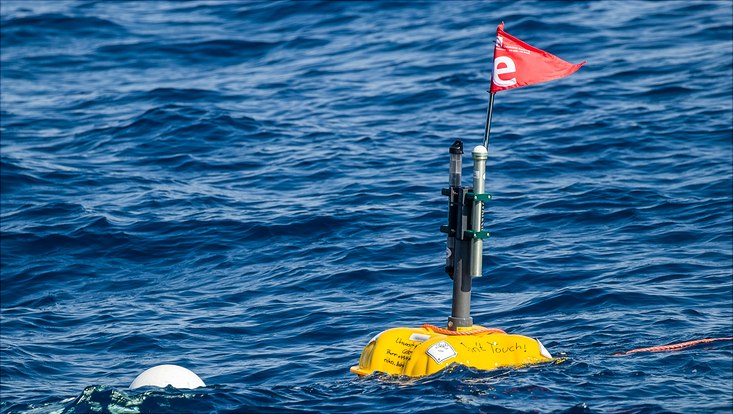Climate Research in the Pandemic
21 October 2021, by Niko Lahajnar about an expedition in the South Atlantic Ocean

Photo: UHH/Knut Heinatz
A voyage full of extremes to rescue valuable research data: 67 days together on board a 16-metre-long ship, and 16,970 sea miles, or 31,400 kilometers, travelled in one go without setting foot on land – the expedition in spring 2021 on board the research vessel SONNE was one of extremes, even for the most experienced of the 13 participants.
I was the chief scientist on the ship, which was deployed by Universität Hamburg’s German Research Fleet Coordination Center. Before departure, we all had to go into quarantine, and then spent two and a half months together in a confined space. It was an extremely intense time with little privacy. Added to this was the uncertainty as to whether we would actually achieve our goal: would we be able to retrieve our instruments, which held data from the last two years, from below the water’s surface?.
For our research, including that on climate change, we have installed measuring devices and numerous sensors in the South Atlantic, which we use to collect samples and data in long-term observation series, e.g. on temperature, salinity, ocean currents and particle flux. However, important components of the system, like those that bring the instruments back to the surface, are powered by batteries that require regular maintenance – and since, because of the coronavirus pandemic, we were unable to visit the sites in 2020, there was a risk that we would lose the equipment – and with it all the valuable data and samples.
When, after 27 days at sea – having set off from Emden on March 19, 2021 – we finally reached the southern tip of Africa, we were faced with the nerve-wracking question: was there any power left in the batteries? To release the instruments from their anchoring, we send a specific acoustic signal through the water column, which activates a mechanism to release the systems from their anchoring weights on the ocean floor. The measuring devices then rise to the surface and we can collect them and bring them on board. But what if the release mechanisms no longer worked? Then came a sigh of relief: they worked for all the systems! Our expedition was a complete success, and we retrieved all the equipment that we had installed two years ago.
Back in Hamburg, the numerous samples and data from the South Atlantic will now be evaluated and analyzed. They will help e.g. to provide answers to the question of what influence the oceans have on climate change. Up to now, the oceans have absorbed between 30 and 50 percent of the total carbon oxide emitted by humans in the past 150 years. Without the oceans, climate change would have progressed very differently. When we fully understand this process, we will not only expand our knowledge of the Earth system, but also be able to improve our forecasts regarding climate change.
19NEUNZEHN
This article was recently published in issue 17 of the university magazine 19NEUNZEHN for the winter semester 2021/22. You can find the complete current issue, and an archive of back issues, on the magazine’s website (German only).


